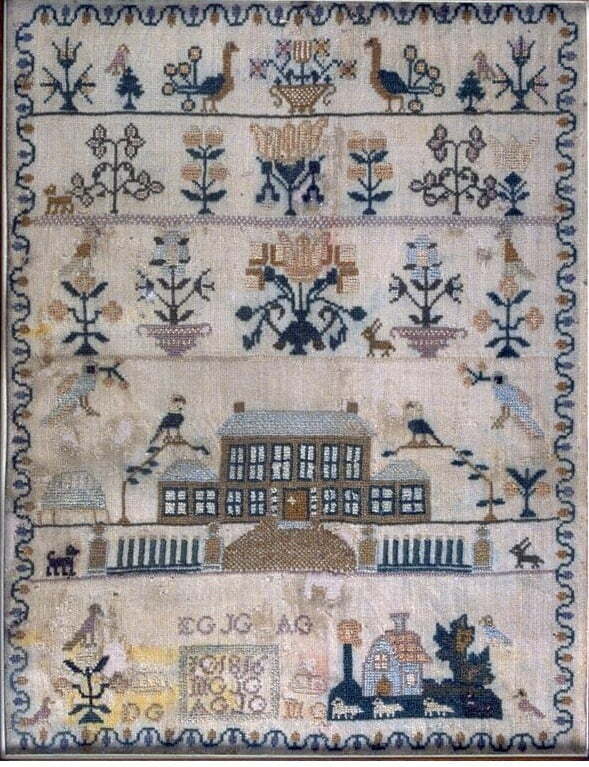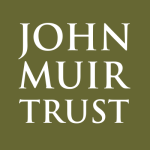Help us celebrate our 20th birthday!
Can you believe it? We opened our doors for the first time on 23rd August 2003 and here we are 20 years later!
We want to say thank you so much to every single visitor who has crossed our threshold over the years, from seasoned John Muir enthusiasts to locals popping in to check our community noticeboard. We wouldn’t be able to open without you.
Our birthday has coincided with some fantastic new research on our Birthplace sampler. Embroidery samplers were often made by young women to mark important events such as leaving school, or to record family births and marriages. We’ve managed to unravel these clues to uncover new information about who stitched our sampler and why. Scroll down to find out about this in more detail and read about what we previously thought here.
We thought our 20th anniversary was a wonderful time to put out a call for embroiderers to produce a replica sampler, keeping in the tradition of samplers being made to mark significant events. Carry on reading below to find out more about why we want to produce a replica.

Licensor: University of the Pacific, Muir Hanna Trust.
This sampler is the only item that we have at the Birthplace that connects to John Muir’s childhood in Scotland. It has been on loan from the United States National Park Service collection at John Muir National Historic Site in Martinez, California since the early 1980s. This is because the sampler ended up in the USA with Ann Gilrye Muir, John’s mother. The sampler has the date 1816 in the box at the bottom, so can’t have been made by Ann, as she was only three!
Who was the mystery stitcher?
The initials correspond with birth, death and marriage dates for the family. They also illustrate the sad reality of Victorian life, with only three of the ten children surviving into adulthood because of tuberculosis. This may have been caused by inhaling bacteria released from the carcasses of infected animals at the families butchers shop at 113 High Street, where Lothian Printers is now located.
What do we know?
- The parent’s initials DG and MG are shown either side of the box on the bottom row.
- In 1816 there were eight Gilrye offspring.
- The five eldest have initials shown in a box with the date 1816.
- IG appears next to the box but is out of sequence.
- The three youngest children’s initials appear above the box.
We think this sampler was stitched by John Muir’s aunt Isabella when she was thirteen years old. Needlework was considered an essential part of a girl’s education. The sampler may have been produced as a form of school leaving certificate to demonstrate the standard of needlework that Isabella had achieved. It would also have coincided with her parent’s 21st wedding anniversary.
Can you help us keep telling this story?
It is vital that we treat delicate old fabrics with care as they are very sensitive to light damage. We have recently had the sampler assessed at the Scottish Conservation Studio and have been advised that it should no longer be on permanent display to minimise ongoing light damage and protect the sampler for the future. We would love to have a replica made so that we can continue to share this amazing story with visitors.
The Scottish Conservation Studio have recommended some conservation work to help preserve the sampler for future generations with an estimated cost of £2,500.
Ideally we would love to have two replica samplers produced – one for display and one as an education resource.
Do you know anyone with the skills to produce a replica? Please let a member of the team know or email museumseast@eastlothian.gov.uk.
You can make a donation to support this exciting project here on our website. You can also donate at the front desk, just speak to a member of the team.
Thank you for your support.
You can learn more about the history of Scottish needlework samplers here on the National Museums Scotland website.







